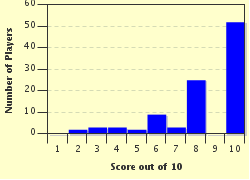Quiz Answer Key and Fun Facts
1. This iconic horse race is held twice a year in one of Italy's most beautiful squares
2. You should bring your own dye to this lively Asian festival that celebrates the end of winter
3. On this three-day holiday, people eat skull-shaped sweets and bring gifts to the graves of their dear departed
4. Although a bit of a misnomer, this famed European event is a must for lovers of heady brews
5. The celebrations for this centuries-old festival, which include lions, dragons and lanterns, last for 15 days
6. Steel drums, elaborate costumes and floats are all featured in this boisterous street event held in a famous London neighbourhood
7. Ernest Hemingway wrote about this adrenalin-packed summer festival held in southern Europe
8. This Buddhist New Year celebration culminates with a gigantic water fight
9. To celebrate this very old tradition in style, people don gorgeous costumes and masks and attend sumptuous parties
10. In spite of the often unfavourable weather, this grand New Year celebration involves a lot of outdoor revelry
Source: Author
LadyNym
This quiz was reviewed by FunTrivia editor
stedman before going online.
Any errors found in FunTrivia content are routinely corrected through our feedback system.

